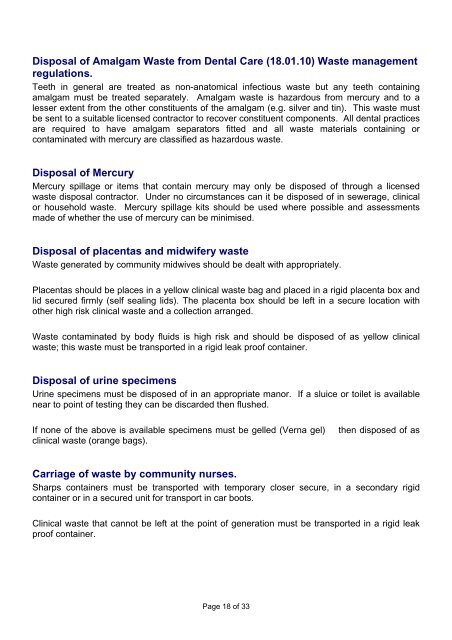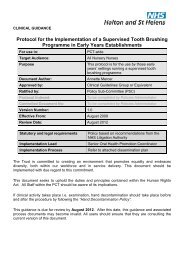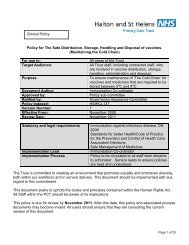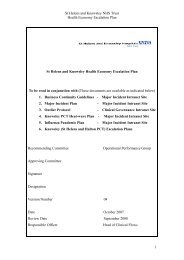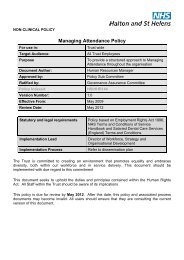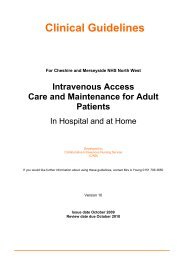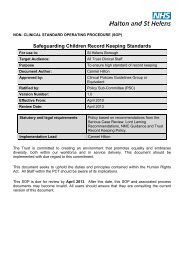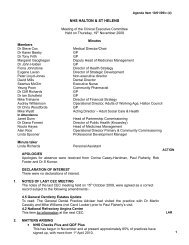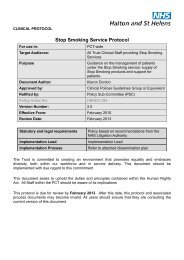Waste Management Infection Prevention and Control Policy No.24
Waste Management Infection Prevention and Control Policy No.24
Waste Management Infection Prevention and Control Policy No.24
You also want an ePaper? Increase the reach of your titles
YUMPU automatically turns print PDFs into web optimized ePapers that Google loves.
Disposal of Amalgam <strong>Waste</strong> from Dental Care (18.01.10) <strong>Waste</strong> managementregulations.Teeth in general are treated as non-anatomical infectious waste but any teeth containingamalgam must be treated separately. Amalgam waste is hazardous from mercury <strong>and</strong> to alesser extent from the other constituents of the amalgam (e.g. silver <strong>and</strong> tin). This waste mustbe sent to a suitable licensed contractor to recover constituent components. All dental practicesare required to have amalgam separators fitted <strong>and</strong> all waste materials containing orcontaminated with mercury are classified as hazardous waste.Disposal of MercuryMercury spillage or items that contain mercury may only be disposed of through a licensedwaste disposal contractor. Under no circumstances can it be disposed of in sewerage, clinicalor household waste. Mercury spillage kits should be used where possible <strong>and</strong> assessmentsmade of whether the use of mercury can be minimised.Disposal of placentas <strong>and</strong> midwifery waste<strong>Waste</strong> generated by community midwives should be dealt with appropriately.Placentas should be places in a yellow clinical waste bag <strong>and</strong> placed in a rigid placenta box <strong>and</strong>lid secured firmly (self sealing lids). The placenta box should be left in a secure location withother high risk clinical waste <strong>and</strong> a collection arranged.<strong>Waste</strong> contaminated by body fluids is high risk <strong>and</strong> should be disposed of as yellow clinicalwaste; this waste must be transported in a rigid leak proof container.Disposal of urine specimensUrine specimens must be disposed of in an appropriate manor. If a sluice or toilet is availablenear to point of testing they can be discarded then flushed.If none of the above is available specimens must be gelled (Verna gel)clinical waste (orange bags).then disposed of asCarriage of waste by community nurses.Sharps containers must be transported with temporary closer secure, in a secondary rigidcontainer or in a secured unit for transport in car boots.Clinical waste that cannot be left at the point of generation must be transported in a rigid leakproof container.Page 18 of 33


